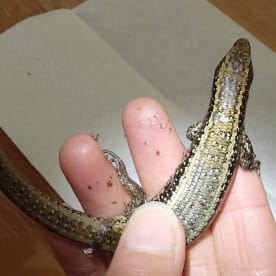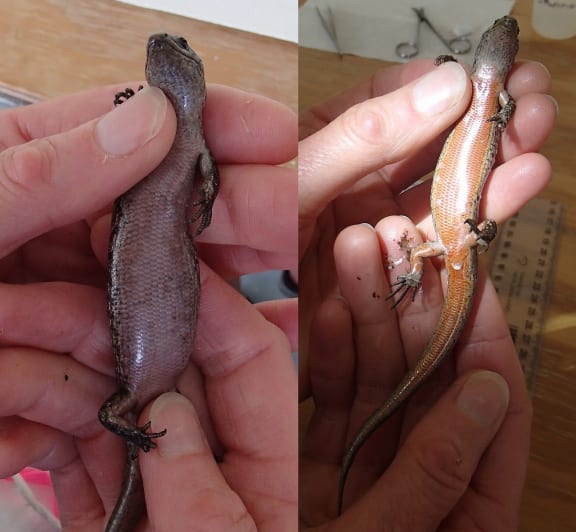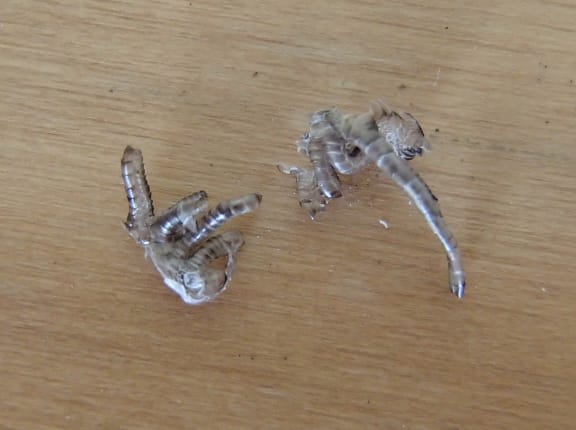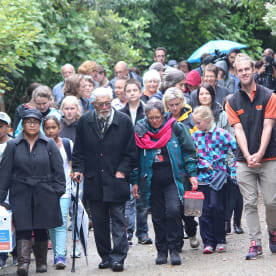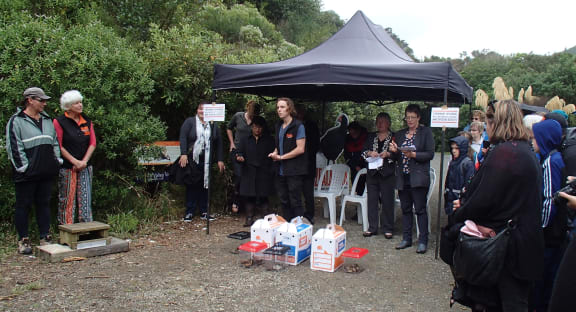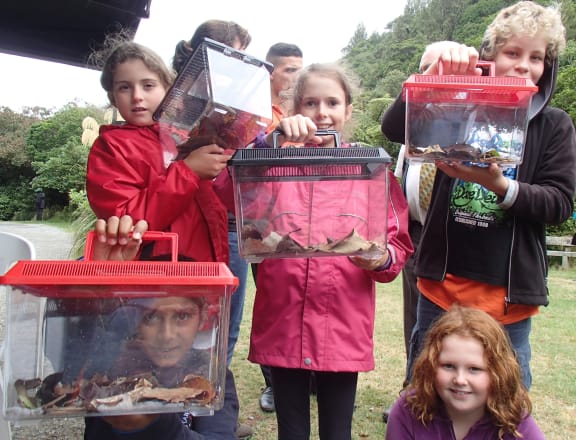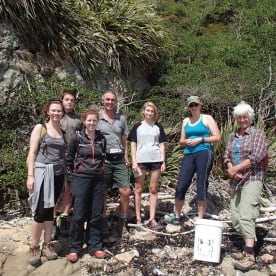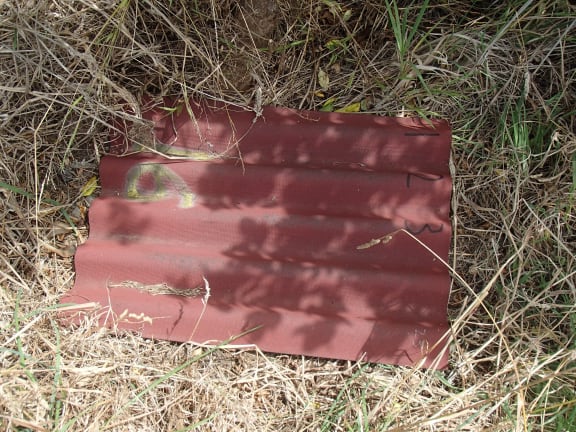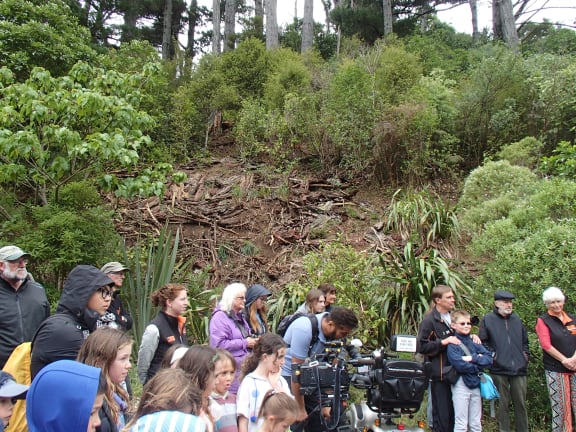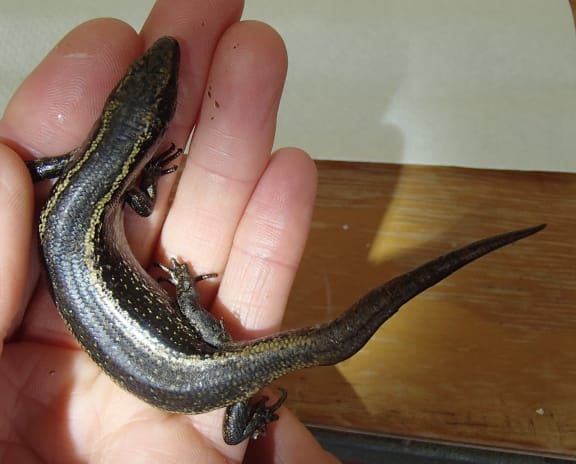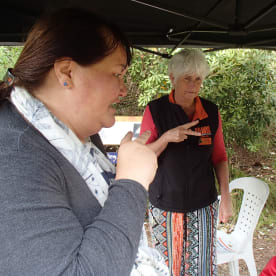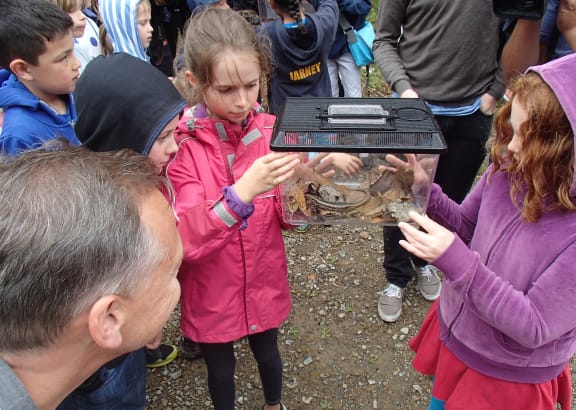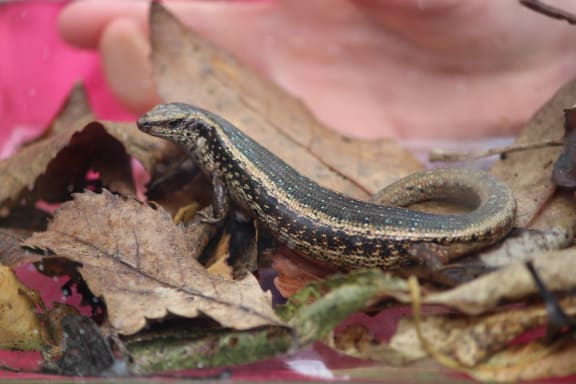“This is our first skink transfer, which is fantastic. The spotted skink will become the largest skink at the sanctuary … and we hope lots of people will see the skinks out basking.”Raewyn Empson, conservation manager, Zealandia Sanctuary
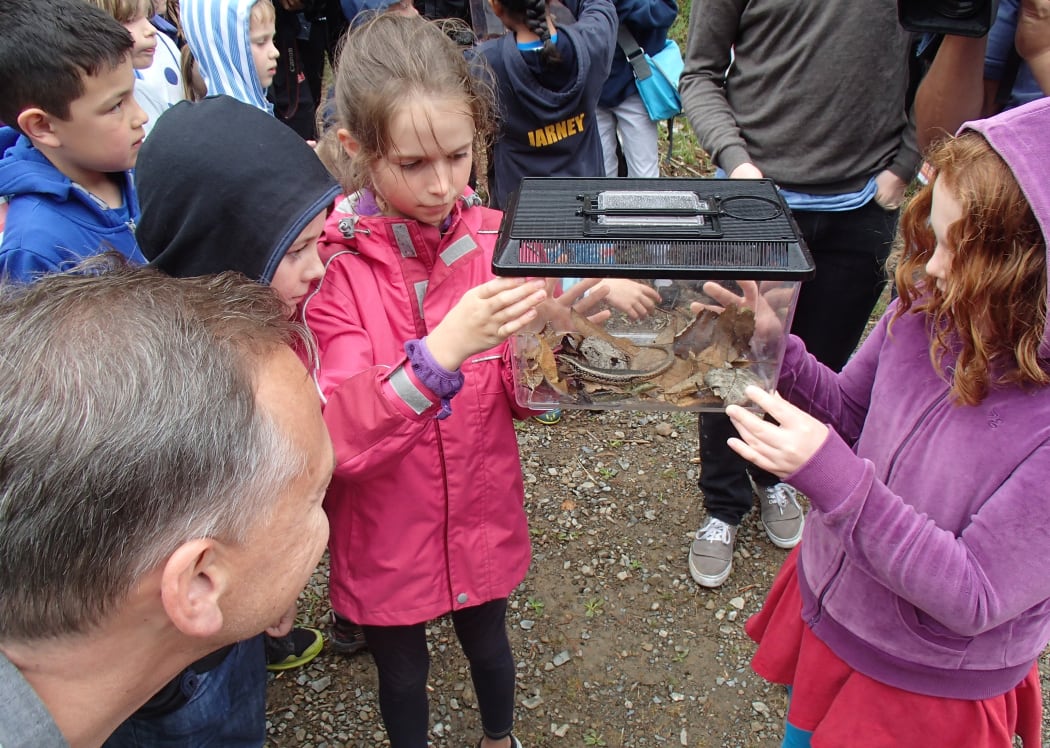
Sarah and Hazel were among the children selected to show off some of the spotted skinks to the guests who came to Zealandia to see the skinks released in their new home. Photo: RNZ / Alison Ballance
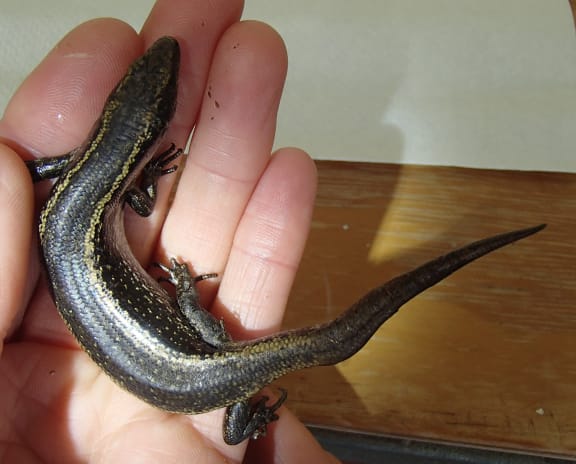
Spotted skink. This one has lost and regrown its tail.From its size this is a pregnant female. Photo: RNZ / Alison Ballance
Nearly a hundred spotted skinks were recently welcomed to their new home in the Zealandia sanctuary in central Wellington.
The skinks were collected from predator-free Matiu Somes Island in Wellington Harbour, where there is a thriving population.
“We know we’ve got a really healthy population out here,” says Emma Dunning, Department of Conservation ranger on Matiu Somes Island. “They just love basking on the side of the tracks, and are the most commonly seen skink on the island.”
Emma Dunning says there are four species of skink on the island, and their numbers have been estimated at about 10 skinks per square metre.
“There’s estimated to be about 80,000 skinks [on Matiu Somes],” says Emma. “The reality is that all of New Zealand should be like that.”
Spotted skinks
Terese McLeod, of Taranaki Whanui, spends summers out on Matiu Somes Island running programmes to engage the iwi’s children with nature. She says she is very familiar with the spotted skinks.
“They are very slick, smart, smooth movers,” says Terese.
Terese says Taranki Whanui are very happy to gift some of their “special skinks to the Zealandia sanctuary, and it was an opportunity to involve the kaitiaki kids in the release.”
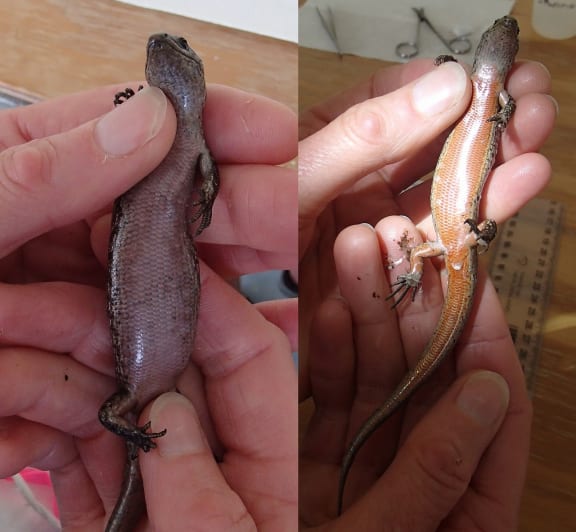
Some spotted skinks have pink bellies while others are bright orange. Photo: RNZ / Alison Ballance
Zealandia’s conservation manager Raewyn Empson says that spotted skinks used to be quite common in the lower North Island and upper South Island, but now have a much reduced range.
Before the skinks were moved off the island they were each given a health check by reptile expert Sue Keall, from Victoria University of Wellington and Zealandia ranger Matu Booth. Individuals were given a unique pattern of toe clips, so they can be identified and monitored over the coming years.
Many of the skinks that were transferred were pregnant females, which should give birth in the next few weeks.
Some skinks were transferred into Zealandia’s large tuatara enclosure, which is mouse-free, while the remainder went into an adjacent area where mouse control is carried out, but it may not be completely mouse-free. The survival of the two groups can then be compared over time to see what impact the mice have.
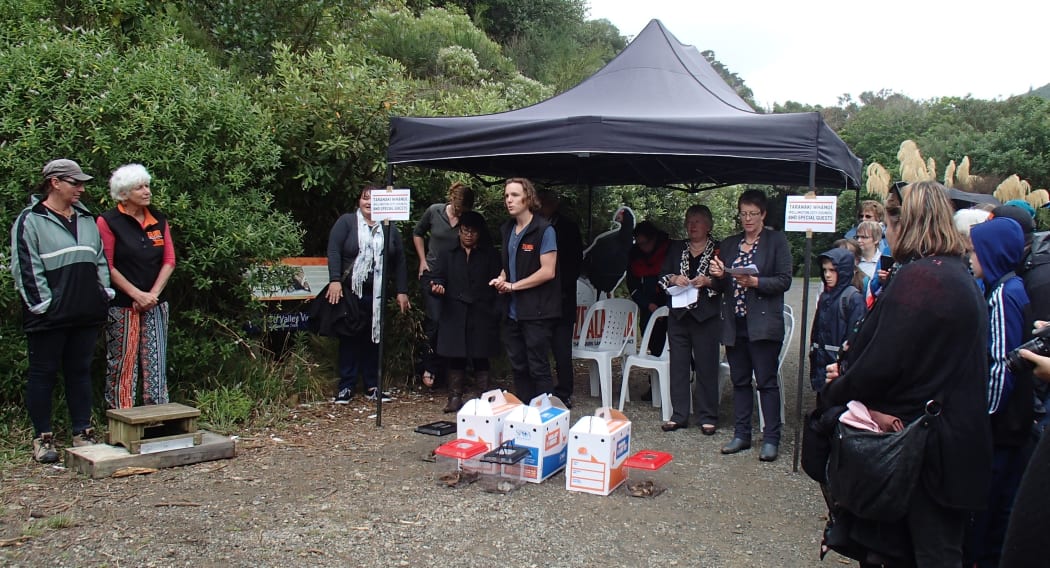
The Wellington Mayor joined members of Taranaki Whanui, Zealandia staff and members of the public to welcome the spotted skinks (in the boxes) to their new home. Photo: RNZ / Alison Ballance
New Zealand conservationists pioneered species translocations, moving plants and animals to new homes. Sometimes it’s for the benefit of the species itself, and sometimes it’s part of the process of ecological restoration, bringing back missing parts of an ecosystem.
Bird translocations are the ones we hear about most often, but 21 species of lizards have also been moved.
A predator-proof fence was erected around the 225 hectare Zealandia sanctuary in 1999, and since then 13 species of pest mammals have been eradicated.
More than 40 species of native plants and animals have been reintroduced, including tuatara, little spotted kiwi, hihi, saddleback, Cook Strait giant wētā and Maud Island frog.
The spotted skinks join four other skink species that already live at Zealandia. Common skink (Oligosoma polychroma). ornate skink (Oligosoma ornatum), brown skink (Oligosoma zelandicum) and copper skink (Oligosoma aeneum).

